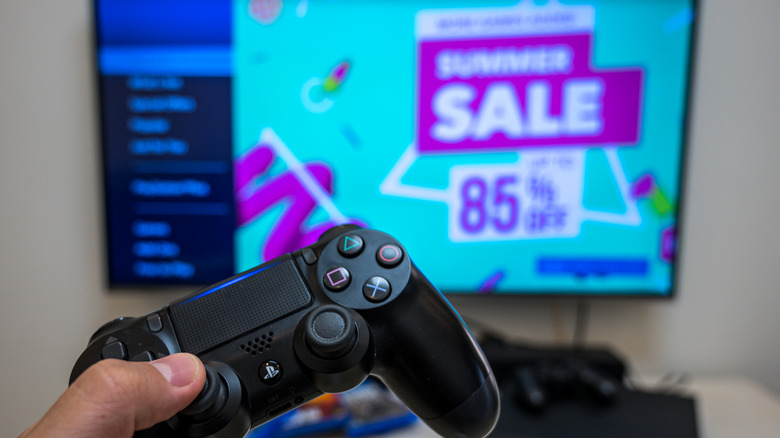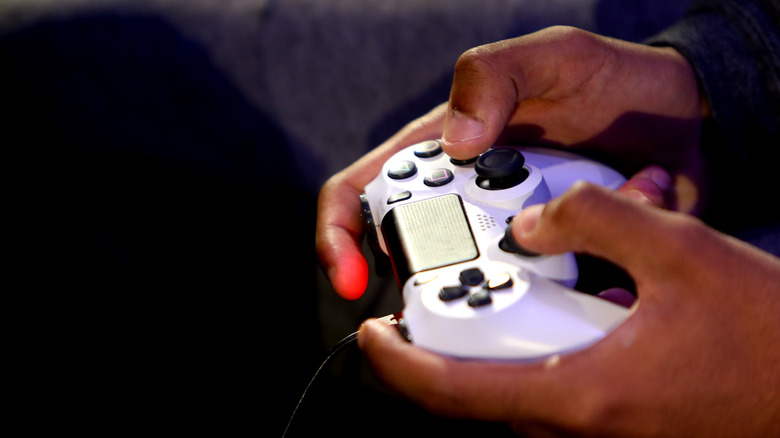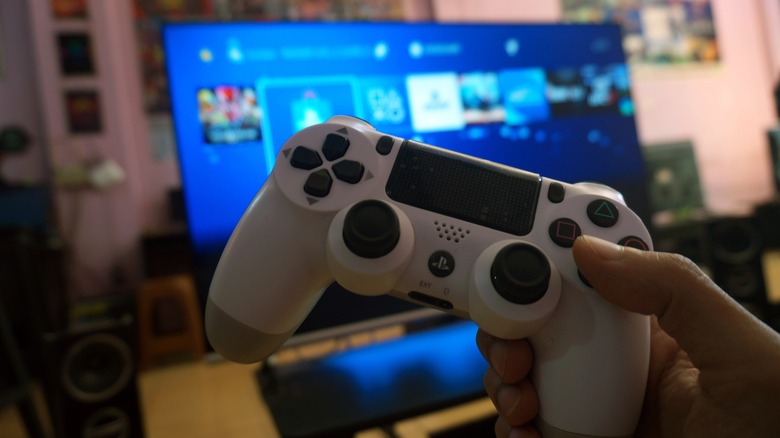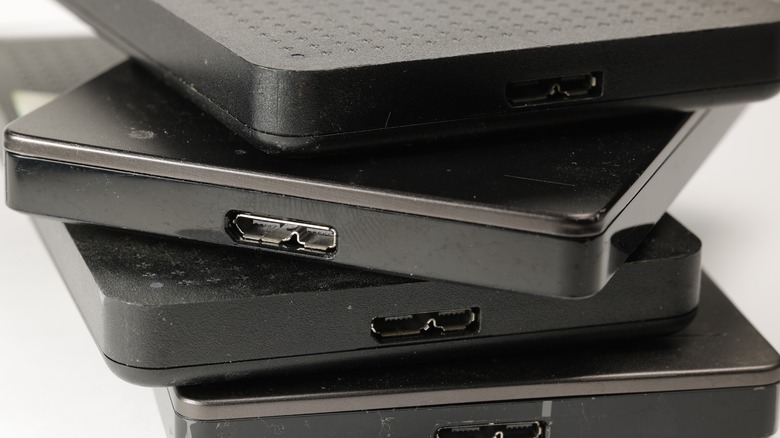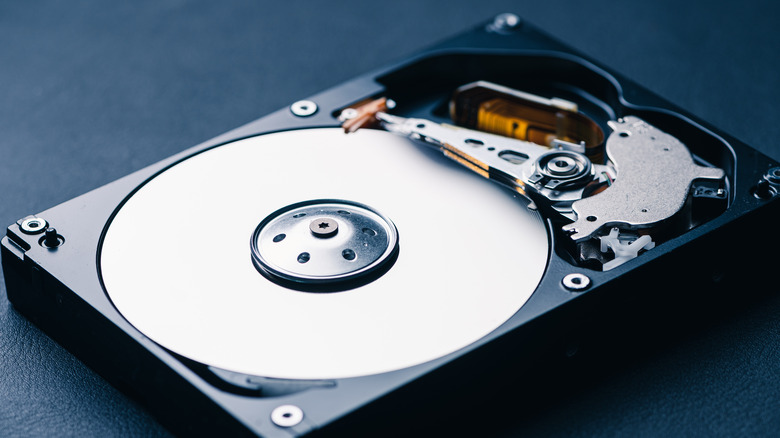
Have you ever found yourself excited to download a new game only to fail because there’s not enough space on your PlayStation 4 console? Well, you’re not alone. Even when it was first released over 10 years ago, the PlayStation 4’s internal storage size was always a bit of a challenge for serious gamers. Because of this, it’s no wonder why people are looking for ways to get more of it. Starting at 500GB for some PlayStation 4 base and slim models, the maximum storage size you can get straight out of the box for PS4 consoles is 1 TB. And while that can feel like a lot for the average person, the reality is that it can feel limiting, especially if you’ve been using your console for several years.
Depending on the type of games you play, the base 500GB storage may not last you very long. For example, despite not needing all of it, the PS4 exclusive release of the Last of Us Part II was met with panic when some gamers realized it needed at least 100GB of free space to download. This doesn’t include additional patches for screenshots and videos. Sure, there are plenty of retro games that only take up peanuts worth of space on your PS4, but if you’re looking at some of the newest releases with the latest graphics, even 1TB may not be enough for all your favorites. Luckily, there are some ways to free up space.
Signs your PS4 storage is full
Before we get space saving, you’ll want to check your storage level. Usually, the most straightforward way to know if your PS4 storage is full is if you experience some sort of failed download, such as when you’re downloading or updating a game or updating system software. Here is how to check for any missed notifications about it.
Advertisement
-
Once your PlayStation console is turned on, navigate to the main menu.
-
On your PS4 DualShock wireless controller, press the up button.
-
In the left section of the screen, select Notifications.
-
Select Downloads.
In this section, you can see if any of your updates are ongoing. If there is an issue with storage, you can usually see an exclamation mark saying and a note that says “Cannot download because there is not enough free space.” Alternatively, there is another way to know how much storage your console has left even before you start a download at all.
-
Once your PlayStation console is turned on, navigate to the main menu.
-
On your PS4 DualShock wireless controller, press the up button.
-
In the right section of the screen, select the Settings icon.
Advertisement
-
Select storage.
Should you find out that your PS4 storage is getting close to being overwhelmed, there are plenty of things you can do to give it a little more room to breathe. To do this, you’ll need to look at both your PS4 hardware or software for ways to either delete things you don’t need or expand your storage options. Here’s how to do it.
Delete unused games
If you’re not keen on playing a specific game again, you might just want to remove it completely from your console. After all, life’s too short to hold on to games that you don’t like. No matter how highly-rated, there are just games that you may not find enjoyable. Plus, with so many exclusive PlayStation titles and sales happening every now and then, it’s pretty easy to find new games that strike your interest. If you’re keen on getting some storage back, so you can use the space for new games that actually spark joy, here’s how to delete your old PS4 games.
-
Select the Settings icon.
-
Scroll down and select Storage > System Storage.
-
Under System Storage, select Applications.
-
On your PS4 DualShock controller, press the OPTIONS button.
-
Back on your PS4 display, select Delete.
-
Manually check the boxes next to the names of the games you want to delete or choose Select All.
-
In the lower-right corner of the screen, select Delete.
-
In the confirmation screen, select Ok to proceed with the deletion.
Afterward, you may want to revisit the System Storage section and check out other things that can go in the trash as well, like saved data.
Remove Saved Data
If you’re a PlayStation Plus subscriber, you’ll have the option to upload your saved data online. As a benefit to its subscribers, Sony notes that you can upload 100 GB worth of saved game data to its cloud storage. If you’re planning to upgrade to the PlayStation 5 in the future, this is a great way to make sure you can still use your compatible games without losing any progress. Otherwise, here’s how to delete saved data for games you don’t plan on playing anymore.
Advertisement
-
Launch your PlayStation 4 console and navigate to the main menu.
-
On your PS4 DualShock controller, press the up button.
-
In the right section of the screen, select Settings.
-
Scroll down and select Storage > System Storage.
-
Under System Storage, select Saved Data.
From here, you can review all the saved data across the different games that you play, which will include things like system data and replay data. If you’re still playing some of these games, you can select the game files and review each data file. Once you find files you’re content to remove permanently, you can press the Options button on your PS4 controller and select delete.
To delete all the saved data for each game, you can return to the Saved Data screen, press the Options on your PS4 controller and choose Select Multiple Applications. Next, check the boxes next to the game’s name or choose Select All. Then, in the lower-right corner of the screen, select Delete.
Say goodbye to your saved screenshots
One of the convenient additions to the PS4 DualShock wireless controller from its predecessor is the Share button, which makes it easy to save and share content, whether that’s images or videos clips of your games. That said, while it can be nostalgic to look back at old game screenshots and videos, you can probably do away with most of these game keepsakes. While there’s no standard file size for PS4 screenshots, they can range anywhere from 80 KB to almost 500 KB, which can quickly add up if you’re trigger happy with documentation. Here’s how to delete the ones you’re not so in love with.
-
Launch your PlayStation 4 console and navigate to the main menu.
-
On your PS4 DualShock controller, press the up button.
-
In the right section of the screen, select the Settings icon.
-
Scroll down and select Storage > System Storage.
-
Under System Storage, select Capture Gallery.
In this section, you can see the combined file sizes of your screenshots displayed per game. Once you select the game, you can filter the images into screenshots or video clips. To delete the images, press the Options button on your DualShock controller and select Delete. Alternatively, in the same screen, you do have the option to upload them to “Copy to USB Storage Device” instead. Just make sure you format your USB properly (FAT or exFAT) on your computer before plugging it into your PS4.
Invest in an external hard drive
Should you refuse to delete anything stored, you will be relieved to know that you can invest in an external hard drive instead. Unfortunately, Sony shares that not all external HDD models work with the console, but one popular PS4-friendly external HDD is the Seagate Portable External Hard Drive, which has an average of 4.7 stars across over 130,000 reviews on Amazon. Seagate offers external hard drive options for 1TB ($64.05), 2 TB ($79.99), and 4TB ($124.99), which include matched firmware for some models. Once you have a compatible external HDD on-hand and your PS4 software is running on at least version 4.50, here’s how to get started.
-
Plug your external hard drive to your PlayStation 4 console via the USB port.
-
Launch your PlayStation 4 console and navigate to the main menu.
-
On your PS4 DualShock controller, press the up button.
-
In the right section of the screen, select the Settings app.
-
Select Devices > USB Storage Devices.
-
In the list of Devices, select your external hard drive name.
-
Select Format as Extended Storage > Next > Format.
Afterward, the external hard drive should appear as “Extended Storage” in the Storage section of your PS4 Settings section. Although you can’t move a game while it is in the middle of a download, you can either wait for it to finish completely first or restart the process. Apart from games, you can also move apps to your external HDD as well.
Swap out the hard drive
Before you proceed with swapping up your PS4 hard drive to one with higher storage space, don’t forget to back up the important things first. You can do this with any FAT or exFAT formatted USB that you can fit into the PS4 USB ports or with the PlayStation Plus. Next, you’ll want to check what model your particular console is, as it will affect the specific steps you need to take to locate and replace the existing hard drive with a better one. Once you’re all set, you’ll need to get your replacement hard drive and a screwdriver to get started. After you’re done swapping out your hard drive, you’ll need to re-install the PS4 software. Here’s how to do it.
-
On your computer, go to the Sony Support website’s software section.
-
Under How to reinstall the PS4 console system software, select PS4 console reinstallation file.
-
Copy the “PS4UPDATE.PUP” file into a FAT or exFAT USB and plug it into your PS4.
-
Hold the PS4 power button until it beeps two times.
-
Connect your PS4 controller via wired connection to your console and press the PS button to launch it in Safe Mode.
-
Select Initialize PS4 (Reinstall System Software) > select Ok
-
In the warning screen, select Yes.
Depending on your priorities, you can either use a standard hard drive or a solid state flash drive (SSD), as long as it isn’t thicker than 9.5mm, so it can comfortably fit inside the PlayStation 4 body.

